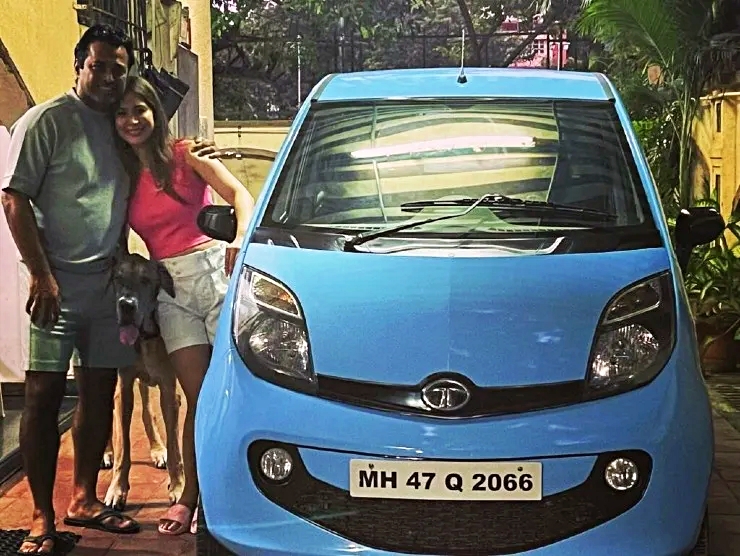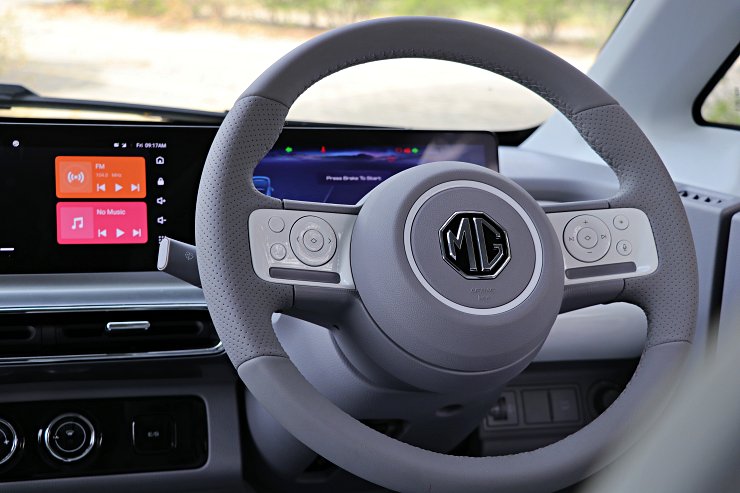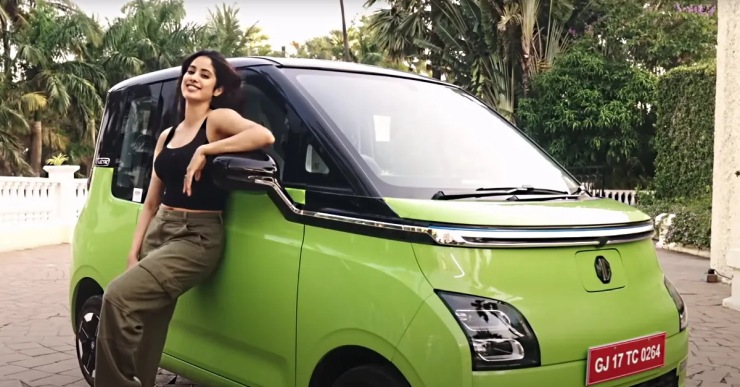MG Comet: A Tata Nano for the 2020s! (In a good way)
Back in 2008, when the Tata Nano rolled out onto the scene, it pretty much flipped the script on what we thought affordable cars could be. It was tiny, it was basic, and most importantly, it was cheap—like, really cheap. The idea was pretty straightforward: get those who’d never dreamed of owning a car into the driver’s seat. Fast forward to 2023, and here comes the MG Comet, sliding into the chat with a similar vibe but updated for today’s world.
Comet: Doing what the Nano came to do, but in style?
Not exactly. The Nano came to the country determined to be the transport solution for the masses – but it failed due to myrid reasons – from the ‘cheap’ tag to bad PR from a couple of car fires, to production constraints and fast-dipping used car prices. The MG Comet on the other hand is definitely modern, cool, not cheap and clearly a city car. Smaller ambitions, but more targeted. And it seems to be working, with sales steady.
Size and Style: Both tiny but different enough
So, let’s talk size and looks first. The Nano was this cute little thing, about 3.1 meters long, designed to be as practical as a pair of old jeans— basic with good overall shape, but very utilitarian in its charm. Now, the MG Comet stretches out a bit more, hitting the 3.4-meter mark, and it’s got that modern flair with sharper lines and a shape that’s belongs to 2024. Despite the slicker look, it’s still playing the space game smart, a bit better than the Nano did.
What’s Under the Hood

Power-wise, the Nano hummed along with its 624cc, two-cylinder gas engine, pushing out a modest 38 horsepower. The Comet, though, zips into the future with an electric motor that throws down 41 horsepower and 110 lb-ft of torque. Paired with a 17.3 kWh battery, it boasts a range of up to 200 kilometers on a full charge. The Nano might have been slow to pick up speed, but the Comet’s electric zip gives it that spark, especially for buzzing around the city—though don’t expect to break any speed records.
Interiors: A massive difference!

On the inside, the Nano was as basic as you could get—think of it as the car equivalent of a camping trip. The Comet, though, spruces things up a notch without going overboard. You’ve got air conditioning, power windows, a 7-inch touchscreen for tunes and maps, and a digital dash to keep things looking fresh. Overall, every review of the MG Comet said that the interior feels very modern and quite premium. Still, it skips the fancier perks to keep the sticker price friendly.
Let’s Talk Money
Price-wise, the Nano was the king of affordability with its initial tag of Rs 1 lakh only, though the price went up over the years due to inflation as well as improvements. The MG Comet, setting you back about Rs 7 lakh ex-showroom in India, isn’t quite as dirt-cheap but stands out as one of the most wallet-friendly EVs you can snag (if you don’t count the Tata Tiago EV). Targeting a similar crowd—the first-timers, city slickers, and anyone after a bargain ride that’s kinder to the planet—the Comet is all about that eco-friendly journey without the hefty price tag. EVs are by default pricier than ICE vehicles, and we are talking about a gap of some 20 years from the introduction of the Nano.
So here’s the deal: the MG Comet is kind of like the new-age Tata Nano. But without the ‘cheap’ tag attached to it. It sticks to the script of offering straightforward, affordable transport but with a twist—electric power and a few more bells and whistles. While it holds onto the heart of what made the Nano stand out, it’s definitely playing its own tune for today’s audience. As we all lean into greener ways to get around, the Comet might just have the right stuff to make a success of it unlike the Nano which failed to deliver for the company – despite making a brave attempt.
The post MG Comet: A Tata Nano for the 2020s! (In a good way) first appeared on Cartoq.
Back in 2008, when the Tata Nano rolled out onto the scene, it pretty much flipped the script on what we thought affordable cars could be. It was tiny, it was basic, and most importantly, it was cheap—like, really cheap. The idea was pretty straightforward: get those who’d never dreamed of owning a car into the driver’s seat. Fast forward to 2023, and here comes the MG Comet, sliding into the chat with a similar vibe but updated for today’s world.
Comet: Doing what the Nano came to do, but in style?

Not exactly. The Nano came to the country determined to be the transport solution for the masses – but it failed due to myrid reasons – from the ‘cheap’ tag to bad PR from a couple of car fires, to production constraints and fast-dipping used car prices. The MG Comet on the other hand is definitely modern, cool, not cheap and clearly a city car. Smaller ambitions, but more targeted. And it seems to be working, with sales steady.
Size and Style: Both tiny but different enough
So, let’s talk size and looks first. The Nano was this cute little thing, about 3.1 meters long, designed to be as practical as a pair of old jeans— basic with good overall shape, but very utilitarian in its charm. Now, the MG Comet stretches out a bit more, hitting the 3.4-meter mark, and it’s got that modern flair with sharper lines and a shape that’s belongs to 2024. Despite the slicker look, it’s still playing the space game smart, a bit better than the Nano did.
What’s Under the Hood

Power-wise, the Nano hummed along with its 624cc, two-cylinder gas engine, pushing out a modest 38 horsepower. The Comet, though, zips into the future with an electric motor that throws down 41 horsepower and 110 lb-ft of torque. Paired with a 17.3 kWh battery, it boasts a range of up to 200 kilometers on a full charge. The Nano might have been slow to pick up speed, but the Comet’s electric zip gives it that spark, especially for buzzing around the city—though don’t expect to break any speed records.
Interiors: A massive difference!

On the inside, the Nano was as basic as you could get—think of it as the car equivalent of a camping trip. The Comet, though, spruces things up a notch without going overboard. You’ve got air conditioning, power windows, a 7-inch touchscreen for tunes and maps, and a digital dash to keep things looking fresh. Overall, every review of the MG Comet said that the interior feels very modern and quite premium. Still, it skips the fancier perks to keep the sticker price friendly.
Let’s Talk Money
Price-wise, the Nano was the king of affordability with its initial tag of Rs 1 lakh only, though the price went up over the years due to inflation as well as improvements. The MG Comet, setting you back about Rs 7 lakh ex-showroom in India, isn’t quite as dirt-cheap but stands out as one of the most wallet-friendly EVs you can snag (if you don’t count the Tata Tiago EV). Targeting a similar crowd—the first-timers, city slickers, and anyone after a bargain ride that’s kinder to the planet—the Comet is all about that eco-friendly journey without the hefty price tag. EVs are by default pricier than ICE vehicles, and we are talking about a gap of some 20 years from the introduction of the Nano.
So here’s the deal: the MG Comet is kind of like the new-age Tata Nano. But without the ‘cheap’ tag attached to it. It sticks to the script of offering straightforward, affordable transport but with a twist—electric power and a few more bells and whistles. While it holds onto the heart of what made the Nano stand out, it’s definitely playing its own tune for today’s audience. As we all lean into greener ways to get around, the Comet might just have the right stuff to make a success of it unlike the Nano which failed to deliver for the company – despite making a brave attempt.
The post MG Comet: A Tata Nano for the 2020s! (In a good way) first appeared on Cartoq.
